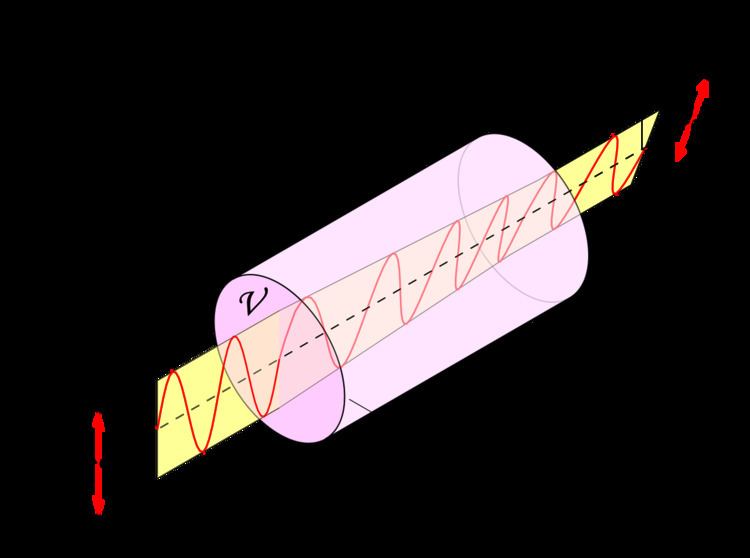 | ||
A Faraday rotator is a polarization rotator based on the Faraday effect, which in turn is based on a magneto-optic effect. It works because one polarization of the input light is in ferromagnetic resonance with the material which causes its phase velocity to be higher than the other.
The plane of linearly polarized light is rotated when a magnetic field is applied parallel to the propagation direction. The empirical angle of rotation is given by:
Where
Then
Faraday rotation is an example of non-reciprocal optical propagation. Unlike what happens in an optically active medium such as a sugar solution, reflecting a polarized beam back through the same Faraday medium does not undo the polarization change the beam underwent in its forward pass through the medium. This allows Faraday rotators to be used to construct devices such as optical isolators to prevent undesired back propagation of light from disrupting or damaging an optical system.
The geometry of nonreciprocal propagation may at first appear paradoxical. In an optically active medium, the polarization direction twists in the same sense (e.g. like a right-handed screw) during the forward and backward passes, whereas in a Faraday medium, because the light reverses its propagation direction with respect to the magnetic field, the helicity of the propagation also reverses. But because the propagation axis has also reversed, this reversal of helicity is just what is needed to cause the back-reflected light to have different polarization from the incident light. If the Faraday medium is of such thickness as to cause a 45 degree rotation on the way in, the back-reflected beam will have polarization perpendicular to the incident beam, allowing it to be cleanly blocked by the light source's polarizer.
Faraday rotators may be enhanced by the Zeeman effect.
